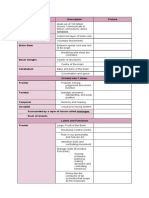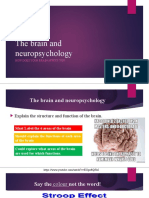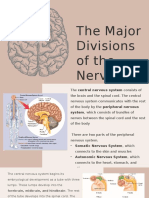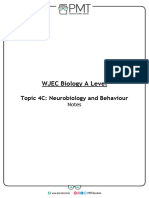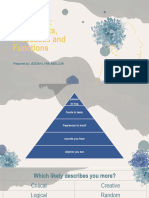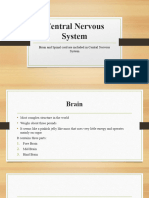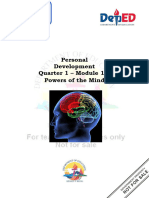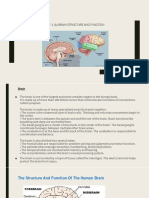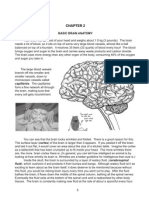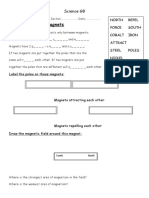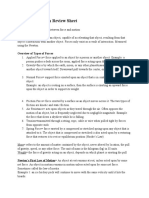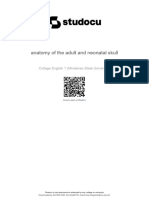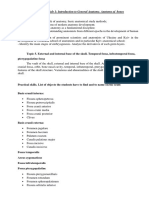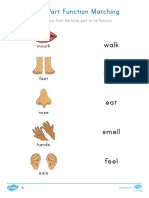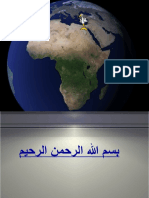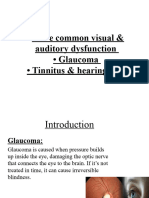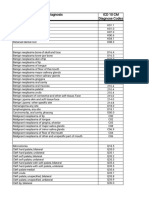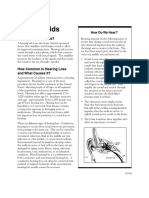Practitioner Notes: The Brain
Characteristics of the Brain
What does the brain look like?
The brain has been described as “soft” and “squishy”
and white (white matter), black (substantia nigra), red
(blood vessels), and gray (gray matter) in colour with
the consistency of warm butter.
What is the brain made of?
The brain is primarily made up of neurons (cells that
communicate with one another and perform
information- processing tasks) and glial cells (support “Diagram showing some of the main areas of the
cells) (Schacter et al., 2012). Compared to other brain CRUK 188” by Cancer Research UK on
animals, the human brain is very large (relative to body Wikimedia Commons is licensed under CC BY-SA 4.0
size), weighing approximately 1.3-1.4 kg.
What does the brain do?
The brain is essentially the “boss of the body”. It manages motor control, sensory information,
language, emotion, regulates automatic functions such as heart rate and breathing, and controls
other executive functions such as attention and working memory (Schacter et al., 2012).
Composition of the Brain
The brain is composed of specialised areas. Although students are learning about different lobes, it is
important to understand that none of these structures can act alone and are all part of one big
whole. Major divisions of the brain include the hindbrain (coordinates information from the spinal
cord), midbrain (orientation, movement, and arousal), and the forebrain (complex cognition, and
controls motor and sensory information). Collectively, the hindbrain and the midbrain are referred
to as the brainstem. The forebrain is divided into subcortical structures and the cerebral cortex
(highest level of the brain, divided into lobes). In the brain activity, students will look at the functions
of the brainstem and the 4 lobes (frontal, parietal, temporal, and occipital).
Lobes of the Brain and their Functions
The frontal lobe sits behind the forehead, and allows humans to engage in cognition such as
planning, reasoning, thinking, and imagining that sets us apart from most other species (Stuss &
Benson, 1986). A famous example of damage to the frontal lobe area is the story of Phineas Gage, a
railroad construction foreman who survived an accident in which a large metal rod was driven
through his brain's left frontal lobe, missing the brainstem and spinal cord. Phineas Gage survived
the accident, but displayed significant changes in his behaviour, such as losing his inhibitions and
behaving inappropriately in social situations. However, it is difficult to come up with conclusive
evidence as Gage’s personality was not studied before the accident, and many of the reports are
inconsistent and unsubstantiated by the evidence.
The parietal lobe is located at the top of the head, behind the frontal lobe. It includes the
somatosensory cortex, which is a representation of the body map.
�Frontal Lobe Functions:
Language and speech production
Planning and reasoning
Motor function/voluntary
movement
Emotional expression
Behaviour control
Parietal Lobe Functions:
Processes touch
Processes pain
Processes temperature
Movement using information from
the senses
Processes the body’s position in the
world
Temporal Lobe Functions:
Understanding language
“1421 Sensory Homunculus – PT” by Open Stax College and
Processes sound Ederporto on Wikimedia Commons is licensed CC BY 3.0
Recognises complex objects The temporal lobe rests on the sides of the brain and
Memory includes the primary auditory cortex (where auditory
Occipital Lobe Functions: information is processed), analogous to the
somatosensory cortex in the parietal lobe.
Processes colour
Processes object movement The occipital lobe is located at the back of the head,
Recognises shapes of objects behind the parietal lobe. It houses the primary visual
cortex, responsible for processing visual information.
Brainstem Functions: Damage to the occipital lobe can leave an individual
partially or fully blind.
Balance and Posture
Movement Coordination Along with the functions above, the brainstem is also
involved in coordinating automatic processes such as
The Somatosensory Cortex
respiration, circulation, sleep, and levels of arousal.
Proportionately represents the skin area on Damage to the brainstem can involve vertigo, dizziness or
the contralateral (opposite) side of the body more gravely, locked-in syndrome, in which a patient is
(see diagram) awake but cannot speak or move due to paralysis of
nearly all voluntary muscles except for eye movements
and blinking.
Support Videos
1. “How the brain works”, Sentis, YouTube, 1 Minute 36 Seconds
https://www.youtube.com/watch?v=XSzsI5aGcK4
2. “The Man With a Hole in His Brain”, BrainCraft, YouTube, 3 Minutes 6 Seconds
https://www.youtube.com/watch?v=ZKaDWu2zFG0
� Brain Game
Activity Materials To Print Preparation of Materials
Scissors Brain cut-out Print out the Brain cut-out on a large sheet of
Laminator (optional) Brain functions and lobe paper and cut along the lines into different
Printer names lobes. Next, individually laminate the different
Blu-tac or sticky tape Clue Sheet lobes. Print out the Brain functions and lobe
Brain worksheet (for each names and cut and laminate them as well.
student) Attach the different Brain functions with blue-
Teacher’s Answer sheet, tac on a wall or whiteboard in random order at
for reference the front of the classroom, within easy reach for
the learners.
Activity Instructions
Divide the students into 4 groups
(frontal lobe, temporal lobe, parietal
lobe and occipital lobe/brainstem). Give
each group the corresponding Brain lobe
from the cut-out, along with its name,
and Clue Sheet. Students are to read
each clue in their groups and decide to
which function the clue refers to (there
is one clue per function), keeping in
mind that all of the functions will be for
their specific lobe. When a group solves
a clue, a team member may come up to
the front of the classroom and pick the
function and bring it back to their group.
If during the decision process they are
unsure, the teacher may steer them in
the right direction by asking questions,
with reference from the Practitioner’s
Answer Sheet.
Image is author’s own and contains “Lobes of the brain NL” by
Once each group has collected their Henry Gray on Wikimedia commons is in the Public Domain
functions, each group in turn can come to
the front of the classroom and attach their brain lobe on the board, along with the name and the
functions, and explain to the other groups what that brain part does, where it is, what the clue was,
and/or anything that was hard or easy. Once the brain has been recomposed, see if there are any
questions about the activity. (See the finished map of the brain, its lobes and functions opposite).
Disagreements may arise from two
Encourage students to work Probe students with
groups trying to take one function,
together to solve the clues, questions throughout the
encourage both groups to read out
the 4 teams are working in activity, such as "Why do you
their clues again and encourage
collaboration to solve the think individual patients
students to work together to find
functions of the brain are referred to only by their
out to which group the function
initials?"
belongs to.






















